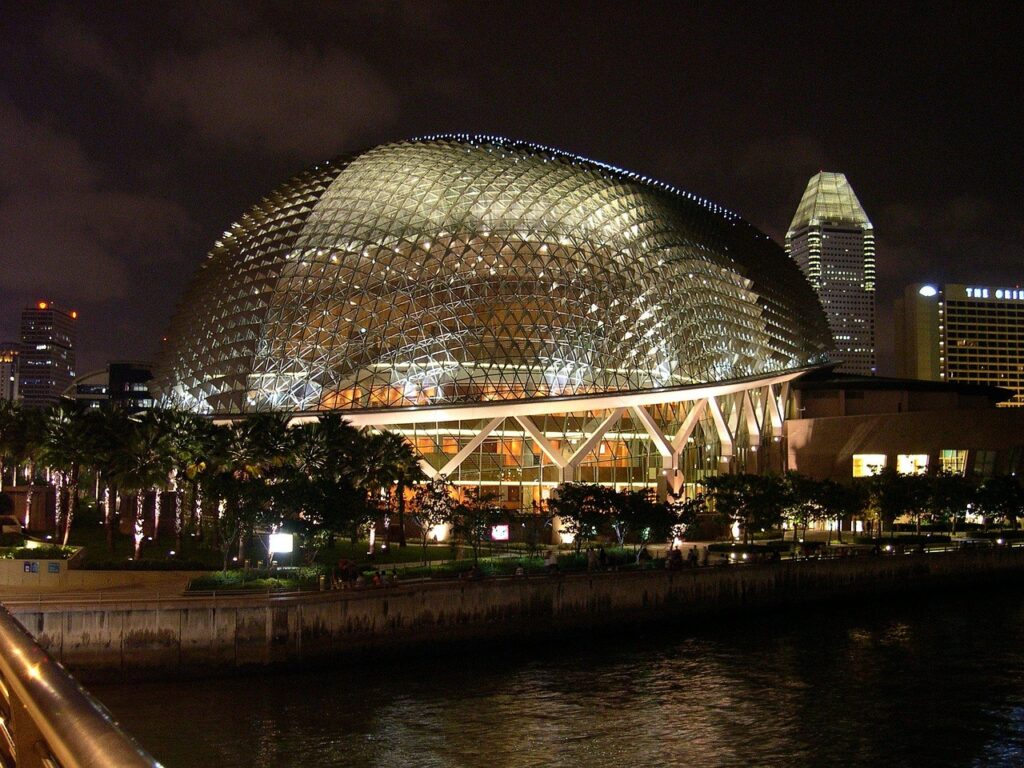What is biomimicry, how do architects use it, and how can we as designers implement it into our practice?
Level 3 / May 11th, 2025

Biomimicry is a design philosophy which emulates nature to create sustainable and efficient buildings or cities. Coined by Janine Benyus in her seminal work ‘Biomimicry: Innovation Inspired by Nature’, this philosophy is about empathising with the natural world in our design methods. At its core, biomimicry presents itself as a practice to be used across multiple contexts, industries, and scales, to help us engineer more sustainable futures.
The Biomimicry Institute, a non-profit founded by Janine Benyus, describes the practice of biomimicry in three parts:
- Emulation: ‘emulation’ describes learning from nature through the application of its processes to human designs. This learning is supposed to be active (rather than passive), which means designers should think critically when mimicking nature, rather than mindlessly copying it.
- Ethical Framework: biomimicry is an approach to making moral decisions about human innovation. By using biomimicry to guide the design process, architects recognise their responsibility to protect and conserve nature.
- (Re)connection: biomimicry helps designers reconnect with the natural world. The philosophy of biomimicry is based on the idea that humans and nature are not separate. The Biomimicry Institute encourages designers to spend time in nature to better understand how it works, and how we can effectively implement natural solutions for human problems.
The Singapore Arts Centre is an example of biomimicry in architectural design. The designers, Michael Wilford & Partner and DP Architects, wanted to install a glass facade, allowing visitors to appreciate Singapore’s view from all directions. Singapore’s tropical climate means that buildings must balance the use of glass with appropriate shading. If architects design glass buildings without adequate shading, they create humid greenhouses that are too hot for citizens to use.
The architects found inspiration in an unlikely object, a tropical fruit commonly found in Singapore called durian. Durian is known for its distinctive smell and spiky outer shell, which serves as a protective layer for the fruit. Designers took inspiration from the fruit’s protective shell, adding more than seven thousand triangular sun shades to the building’s facade, mimicking the Durian’s spiky shell. Michael Wilford & Partner and DP Architects tracked the sun’s path to configure the shading devices; the triangles are fixed in one position, working together to provide coverage throughout the sun’s path.
The Singapore Arts Centre provides us an example of all three parts of the practice of biomimicry:
- Emulation: the building learns from the durian’s protective layer, emulating its spiky shell to fit the needs of the project.
- Ethical Framework: by working with nature, the Singapore Arts Centre creates a more energy efficient building, in turn helping to protect the environment it learns from.
- (Re)connection: the architects reconnect with nature by acknowledging the rhythm of the sun and the protection of the durian, learning from them, and amending their designs accordingly. The visitors get to experience the rhythm of the sun even while inside, reconnecting them with nature as they walk through the building.
Questions
- What is an example of biomimicry in your country?
- Do you think biomimicry is a practical way of designing buildings? Why or why not?
- What other problems can we solve using biomimicry?

Leave a Reply